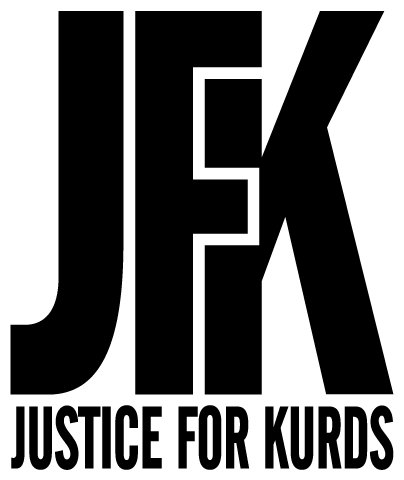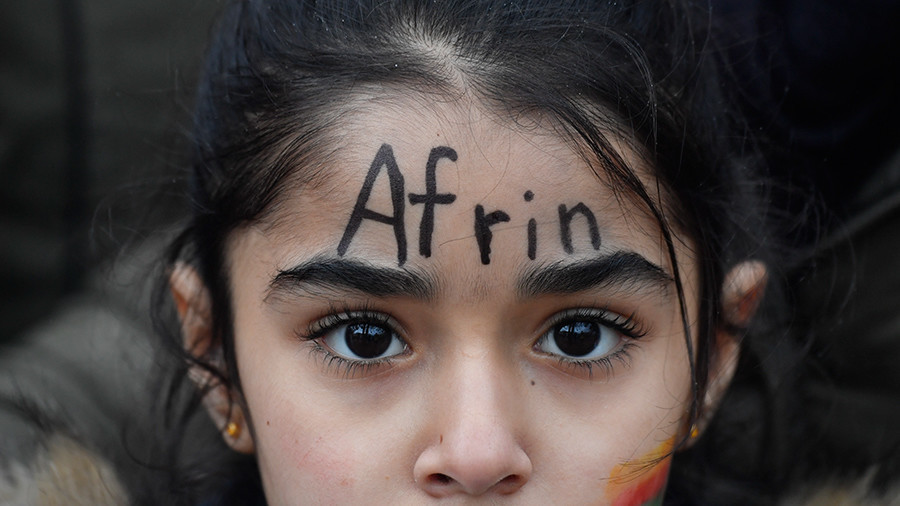The United States-led campaign to hunt down the last pockets of Islamic State militants in Syria has lost its most effective fighting partner — Kurdish forces that are newly-focused on a Turkish assault — in what American military officials fear will stall a critical phase of the offensive and leave open the door for hundreds of foreign fighters to escape.
Syrian Kurds make up the backbone of a ground force of Kurdish and Arab militia that last fall routed the Islamic State from its self-proclaimed headquarters in Raqqa and chased insurgents fleeing south along the Euphrates River Valley to the Iraqi border. In recent weeks, Kurdish officials have pulled thousands of fighters and commanders from that battle and rushed them to Afrin, in Syria’s northwest, where other Kurdish militia are facing sharp attacks from Turkish troops.
That has left behind mostly Syrian Arab fighters to combat the Islamic State, also called ISIS. Arab fighters make up a majority of the Kurdish-led Syrian Democratic Forces, or S.D.F., which would be greatly diminished without the Kurds’ military organization and logistical prowess.
In congressional testimony on Tuesday, Gen. Joseph L. Votel, head of United States Central Command, described the S.D.F. as “the most effective force on the ground in Syria against ISIS.”
“And we need them to finish this — to finish this fight,” General Votel told the House Armed Services Committee.
Without the Kurds, the Arab forces and their American military advisers have largely been forced to halt clearing operations and taken up mostly defensive positions, United States officials said. That has left American air power to pick up the slack.
The development is another major consequence of the fighting that has rapidly unfurled in recent weeks in Syria’s tumultuous northwest.
It threatens not only to slow progress against several hundred Islamic State fighters who are hiding along the Euphrates River or in nearby deserts, but also could allow battle-hardened foreign fighters to escape deeper into western Syria and eventually into Turkey or Jordan — and possibly to return home to Europe or Africa to commit mayhem there, American commanders and analysts said.
Thousands of foreign fighters have already fled unfettered to the south and west through Syrian Army lines, these officials said.
“The campaign to defeat the Islamic State is at risk,” said Jennifer Cafarella, a senior intelligence planner with the Institute for the Study of War in Washington. “The S.D.F. is unlikely to clear remaining ISIS-held areas of the Euphrates River and could even begin to take losses due to the shift in Syrian Kurds’ main effort.”
The turn of events has the potential to upset a triumph that President Trump has held out as one of his administration’s signature national security accomplishments so far.
“ISIS land has been largely recaptured — almost 100 percent,” Mr. Trump said last week during a news conference with Prime Minister Malcolm Turnbull of Australia. “They are on the run.”
Yet senior Trump administration officials and American commanders have been watching, with growing trepidation, as Kurdish troops and commanders divert from the fight against the Islamic State.
Initially, they sought to play down its significance. On Feb. 11, Defense Secretary Jim Mattis called the development “a distraction” and said it was “not a significant number right now.”
Maj. Gen. Jamie Jarrard, the Special Operations commander for the American-led coalition in Iraq and Syria, said in an interview in early February that the elimination of the entire caliphate was “very close.”
“Anything that disrupts us or takes our eye off that prize is not good,” General Jarrard said.
Mr. Mattis, Secretary of State Rex W. Tillerson and Lt. Gen. H.R. McMaster, the White House national security adviser, all have met with Turkish officials in recent days to seek an end to the clashes with Kurdish militia in northwest Syria and prevent the fighting from spreading.
But by last week, Heather Nauert, the State Department’s spokeswoman, acknowledged to reporters on Feb. 22 that “we can no longer fight ISIS the way that we would fully like to be able to do.”
Photo
Defense Secretary Jim Mattis, left, with the Turkish defense minister, Nurettin Canikli, in Brussels earlier this month. A Turkish incursion into Kurdish-held areas in northern Syria has diverted Kurdish forces away from the fight against the Islamic State. CreditPool photo by Virginia Mayo
The diversion of Kurdish fighters and lower-level commanders, who play a pivotal role in directing battlefield operations against the Islamic State, has increased from a trickle to a torrent, according to five American military officials who are monitoring the situation and spoke on condition of anonymity. It is difficult to estimate precisely how many Kurdish fighters have withdrawn.
The Syrian Democratic Forces number about 50,000 Kurdish and Arab fighters throughout eastern and northern Syria, American military officials have said. Several thousand have been fighting the Islamic State in the Euphrates River Valley, with Arabs making up as much as 80 percent of that force, reflecting the demographics of the region.
But as they have elsewhere in the fight against ISIS in Syria, the Kurds have taken on a disproportionate role in front line fighting and command skills, American officials said.
Now some of those gains against the Islamic State are in jeopardy. As of two weeks ago, Kurdish officials said more than 20,000 Kurdish defenders had rallied to Afrin to confront Turkish troops. That number includes fighters who were already there, as well as newly arrived reinforcements.
“The Turkish invasion to occupy Afrin has terribly influenced our fight against ISIS,” Shahoz Hasan, co-president of the Syrian Democratic Union party, said in an interview on Monday. “After we managed to get ISIS in a choke hold,” he said the Turks “are attacking our forces in that region.”
For many Kurdish militia and their commanders, the call to defend family and friends in Afrin and a Kurdish enclave in the city of Manbij that is also threatened by Turkish troops has taken precedence over what many consider to be an American war against the Islamic State.
“Those fighters find it more urgent to be in their areas on the Syrian-Turkish border rather than on the front lines with ISIS,” said Arin Sheikhmos, a Kurdish journalist based in Qamishli. The city is the de facto capital of Kurdish areas of northern Syria, which the Kurds call Rojava.
“To them, it is a priority to defend their land rather than liberating others’ land,” Mr. Sheikhmos said.
The American-led coalition appears to have intensified airstrikes on the Islamic State in areas east of the Euphrates River to fill the battlespace the Kurdish fighters’ had left, Mr. Sheikhmos said. The approach was not working, he said.
He said the Islamic State carried out a car bombing in Qamishli a few days ago, resulting in the deaths of four civilians, including a child. It was the first bombing in the city by ISIS in over a year, he said.
Shervan Derwish, a spokesman for the Manbij Military Council, said 250 Kurdish fighters had arrived in the ethnically mixed area in just the past few days. He said they came from Deir al-Zour, an Arab-majority city and former ISIS stronghold in the Euphrates River Valley that is now contested by Russian-backed Syrian government soldiers and the American-backed Arab-Kurdish coalition.
“Unfortunately, our fighters who joined the rest of S.D.F. on the front lines with ISIS in Deir al-Zour had to retreat to Manbij upon hearing the Turkish threats of attacking us here, doing ISIS a favor,” Mr. Derwish said. The military council is a Kurdish-led component of the Syrian Democratic Forces in Manbij.
As late as Feb. 8, there were still S.D.F. forces in Deir al-Zour, according to the coalition, which bombed pro-Syrian regime forces who had attacked an S.D.F. base and its American advisers there. The airstrikes, it later turned out, killed dozens of Russian mercenaries in the process, American officials said.
Some analysts, including Ms. Cafarella, have assessed that the Russian-backed attackers gave the Kurdish fighters safe transit to Afrin across government-controlled territory and exploited their departure to strike the less experienced Arab partners in the S.D.F.
Agid Ahmed, commander of the Northern Sun battalion of the Manbij council, said he and his fighters were ordered to return from the front lines in Deir al-Zour on Feb. 6. That, in turn, freed up other S.D.F. fighters defending Manbij to reinforce Afrin. Mr. Ahmed fought with American forces in 10 offensives in northern and eastern Syria, including the retaking of Raqqa from ISIS.
Some of the S.D.F. and Manbij council leaders expressed disappointment with American forces for not preventing last month’s Turkish attack on Afrin.
“Americans on the ground do a good job and we learned a lot from them, data sharing, GPS techniques, but politically we’re not very sure about them. Especially since the situation in Afrin,” said Maher Al Ony, who has four Manbij council brigades — about 2,500 fighters — under his command. “We didn’t expect the coalition would allow the Turks to attack Afrin.”
Muhammed Abu Adel, the Manbij council’s top commander, insisted the commitment to fight ISIS remains strong, even as his forces have left Deir al-Zour.
“We sacrificed thousands of lives of our soldiers, we sacrificed so many to finish ISIS,” he said. “And now this, while fighting the most terrible terrorist group, and suddenly there is a state member of NATO come to fight you.”

